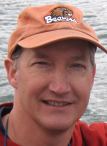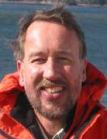Co-Convenors: Blake
Feist (U.S.A.), Hiroshi Kawai (Japan), Olga Lukyanova (Russia), Steven
Rumrill (U.S.A.) and Thomas Therriault (Canada)
Invited Speakers:
Tom Okey (West Coast Aquatic & University of Victoria, Canada)
John Stachowicz (University of California; Davis, U.S.A.)
Toshiyuki Yamaguchi (Chiba University, Japan)
The North Pacific marine environment has provided
a diverse and valuable series of ecosystem services to coastal communities
for many thousands of years. Ocean and land-based anthropogenic activities
are now widely recognized to have a strong influence on ecological processes
throughout the North Pacific marine ecosystem. Anthropogenic influences
such as commercial fishing, aquaculture, pollution, and urbanization
are particularly strong in coastal waters where they impose a wide variety
of multiple stressors that can impact fundamental ecosystem functions,
critical processes, and marine biodiversity. Changes in the physical
and biological environment perturb native communities, often resulting
in disruption of species interactions and trophic relationships that
can negatively impact productivity and diminish ecosystem resilience.
In addition, large scale processes such as regime shifts, ocean oscillations,
and climate variability can alter near-shore processes. For example,
introduced species can negatively impact native communities, and commercial
shipping and recreational activities can be a powerful vector for changes
in the geographic distribution of marine and estuarine species. Similarly,
changing ocean conditions have facilitated the continued pole-ward range
expansion of a number of marine organisms, often with unknown impacts
on the ecosystems they are moving into. Recent range expansion (e.g.,
Humboldt squid) and population eruptions (e.g., jellyfish) on both sides
of the Pacific have had negative consequences for native flora and fauna.
Application of an ecosystem-based approach to coastal management would
provide a template to better understand multiple stressors in coastal
systems. Continuing to study and manage these stressors independently
as single problems must be replaced by examining multiple stressors
within the context of the ecosystems they are altering. Further, global
climate change is expected to have clear consequences with respect to
future species introductions, establishment, and range expansion. Ignoring
complex interactions will only hinder management efforts. Thus, integrating
non-indigenous species invasions with existing anthropogenic stressors
will facilitate a holistic approach to addressing the challenges facing
our coastal marine ecosystems.
This session will explore the characterization, understanding, and
forecasting of the influence of multiple anthropogenic stressors in
North Pacific coastal ecosystems. For example, how do non-indigenous
species interact with other anthropogenic stressors? Contributed papers
will provide a higher-level overview of stressors in various North Pacific
ecosystems (e.g., overharvesting, urbanization, habitat alteration and
loss, mariculture, HABs, pollution, non-indigenous species, etc.) and
the types of impacts that have been observed, especially those linked
to changes in biodiversity and productivity (e.g., extinctions, species
interactions, trophic cascades).
|
Steven S. Rumrill,
Alicia R. Helms and Adam S. DeMarzo
Potential influence of multiple anthropogenic stressors on restoration
and recovery of native
Olympia oysters (Ostrea lurida) in the Coos Bay estuary, Oregon,
USA (S12-6510)
|
|
Olga N. Lukyanova,
Sergei A. Cherkashin and Mikhail V. Simokon
Multiple stressors impact on the ecosystem of Peter the Great Bay (Japan/East
Sea)
(S12-6624)
|
|
L.I. Bendell
Influence of near bottom mariculture structures on intertidal diversity
(S12-6597)
|
Jameal F. Samhouri, Cameron H. Ainsworth, D. Shallin Busch, William
L. Cheung and Thomas A. Okey
The importance of community interactions for predicting climate change impacts
(S12-6759)
|
| |
R. Ian Perry, Diane Masson, David L. Mackas and Gisele Magnusson
Developing ecosystem-based management in a human-dominated marine system:
The Strait of Georgia, Canada (S12-6659)
|
| |
Lingbo Li, Tony Pitcher and Robert Devlin
Investigating potential ecological impacts of growth-hormone transgenic
coho salmon using a marine ecosystem model (S12-6699)
|
| |
Vasily I. Radashevsky
World wide dispersal of mudworm Boccardia proboscidea Hartman,
1940 (Annelida, Spionidae) (S12-6667)
|
| |
Shang Chen, Tao Xia, Guoying Du, Huiyang Wang, Li Wang and Dachuan
Ren
Quantification of influence of Spartina spp. invasion on coastal
wetland ecosystem services: Yancheng case study, China (S12-6552)
|
| |
Thomas W. Therriault, Claudio DiBacco, Leif-Matthias Herborg and
Graham E. Gillespie
The importance of scale for predicting impacts of stressors in nearshore
environments: An example using European green crab (Carcinus maenas)
invasions in British Columbia (S12-6678)
|
| |
Peter S. Ross, Donna Cullon, Andrea Buckman and John K.B. Ford
Climate change may exacerbate pollution impacts in marine mammals of the
North Pacific Ocean (S12-6681)
|
| |
Burke Hales, Jesse Vance, Sue Cudd, Mariona Segura, Wiley Evans
and Alan Trimble
Changing carbonate chemistry and the future of oysters in the eastern North
Pacific boundary system (S12-6538)
|
| |
Tatiana Yu. Orlova, Inna V. Stonik, O.G. Schevchenko and Vladimir
I. Ponomarev
Long-term changes in phytoplankton communities in Amursky Bay (the north-western
part of the East/Japan Sea) under eutrophic conditions (S12-6701)
|
| |
Elizabeth Logerwell, Mary Baker and Amy Merten
Natural resource damage assessment in Arctic waters (S12-6652)
|
| |
Xianshi Jin, Xiujuan Shan, Xiansen Li, Jun Wang, Yi Cui and Tao
Zuo
Long-term variations of ecosystem structure in the Laizhou Bay, China (S12-6731)
|
| |
Vjacheslav. S. Labay
Variability of macrobenthos structure in coastal waters of northern Sakhalin
Island (Okhotsk Sea) around oil- and gas extracting objects (S12-6465)
|
| |
Tatiana V. Morozova, Tatiana Yu. Orlova, Boris A. Burov, Alexander
Yu. Lazaryuk, Sergey P. Zakharkov and Vladimir I. Ponomarev
Dinoflagellate cysts as indicators of eutrophication in the Amursky Bay,
Sea of Japan (East Sea) (S12-6576)
|
| |




















































